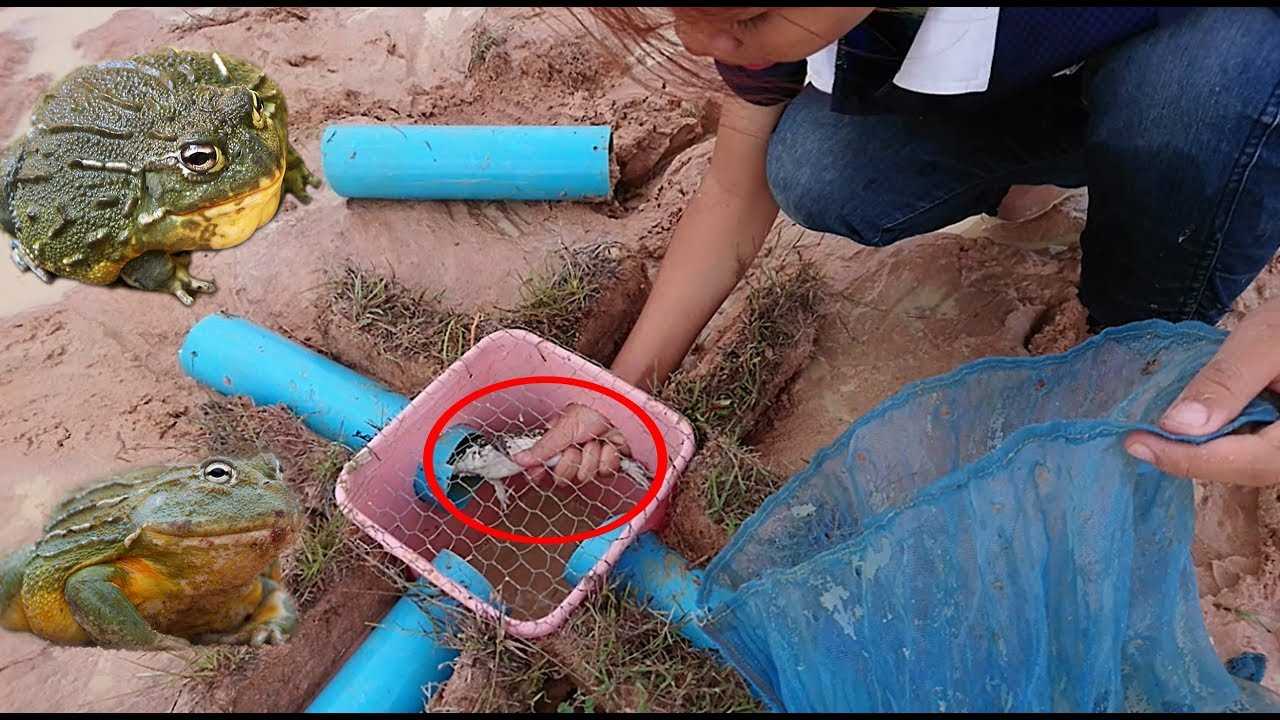
Frogs are fascinating creatures that can be found in various habitats around the world. Sometimes, you may want to trap a frog for educational purposes, research, or simply to observe them up close. However, trapping a frog requires certain techniques and skills to ensure the safety of the frog and the success of your endeavor.
Once you have chosen the right trap, it’s crucial to know where to place it. Frogs are attracted to certain habitats, such as ponds, streams, or wetlands. By placing the trap in or near their natural habitat, you increase the chances of capturing a frog. Similarly, it’s essential to consider the time of day and weather conditions, as frogs are more active during the evening and on rainy days.
Choosing the Right Location to Trap Frogs
Here are some factors to consider when deciding on the location for your frog trap:
1. Proximity to Water Sources: Frogs require water to survive and reproduce, so it is essential to place your trap close to a water source. This can be a pond, lake, river, or even a small stream. By setting up your trap near water, you increase the chances of attracting frogs and successfully trapping them.
3. Avoiding Human Disturbance: Frogs are sensitive to human disturbance, so it is best to avoid trapping them in areas that are heavily frequented by people. Look for secluded spots away from walking paths, recreational areas, or residential zones. This will minimize the risk of scaring off the frogs and increase the chances of trapping them successfully.
4. Research Local Frog Species: Different frog species have different habitat preferences. Before setting up your trap, take some time to research the local frog species in your area. This will give you valuable information about their preferred habitats and behavior, helping you choose a suitable location for trapping.
Frogs are most active during the warmer months, especially in the evenings and early mornings. They are excellent jumpers and swimmers, using their powerful hind legs and webbed feet to navigate through water and land.
One technique to attract frogs to a trap is by mimicking their natural surroundings. Creating a mini-habitat with vegetation, rocks, or logs can make the trap more appealing to them. Additionally, baiting the trap with a food source that frogs find irresistible, such as insects or small fish, can increase the chances of success.
Tips for selecting the right trap to catch a frog
- Trap material: There are various materials available for frog traps, including wire mesh, plastic, or fabric. Consider the durability and ease of cleaning of the trap material for long-term use.
- Entry and exit points: Look for a trap that has a convenient entry point for the frog to enter easily but ensures that once inside, they cannot escape. The exit points should be designed in a way that allows for safe removal of the captured frog.
- Weather resistance: If you plan to trap frogs outdoors, make sure the trap is weather-resistant and can withstand exposure to the elements. This will ensure the trap’s longevity and effectiveness.
- Ease of use: Choose a trap that is easy to set up and doesn’t require complicated mechanisms. This will save you time and effort in trapping frogs.
By considering these factors, you can select the right trap to effectively catch frogs. Remember to always check local regulations regarding trapping frogs and to handle trapped frogs with care for their safety and wellbeing.
Baiting the Trap
Here are some effective techniques and tips for baiting your trap:
1. Choose the right bait
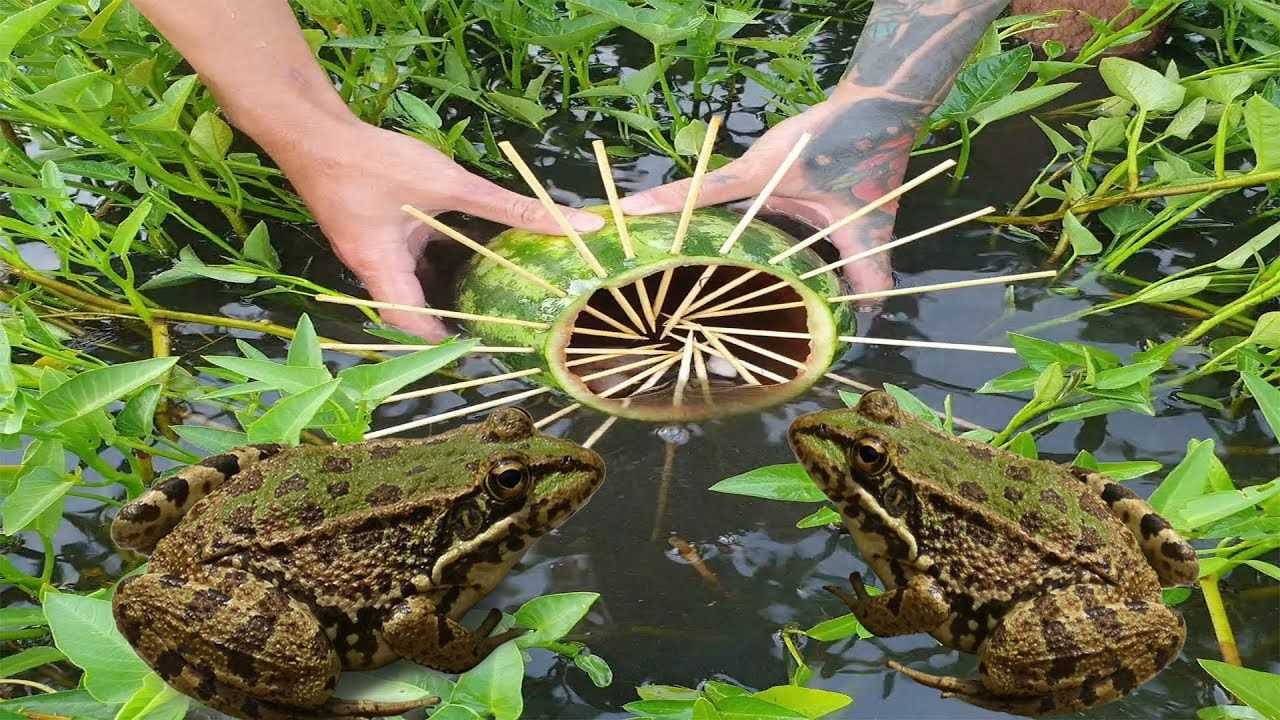
Some commonly used baits for frog trapping include:
- Insects: Crickets, grasshoppers, and beetles are all excellent choices for attracting frogs.
- Worms: Nightcrawlers, red worms, and earthworms can also be effective bait options.
- Small fish: If you’re targeting larger species of frogs, such as bullfrogs, using small fish like minnows or guppies as bait can be highly enticing.
Experiment with different bait options to see which works best in your specific location and for the frogs you’re trying to trap.
2. Properly place the bait
Make sure that the bait is visible to the frog from the entrance of the trap, so it’s tempted to enter. You can use a mesh bag or container to hold the bait securely in place, preventing the frogs from eating it without triggering the trap.
Additionally, consider the size of the bait in relation to the size of the trap. Avoid using bait that is too large or too small, as this can make it difficult for the frog to engage with the trap and get caught.
3. Experiment and be patient
Baiting a trap is not an exact science, and different frogs may be attracted to different types and sizes of bait. It may take some trial and error to find the bait that works best for your intended frog species.
Be patient and allow the trap to sit for a sufficient period. Frogs can be cautious creatures, so it may take some time for them to become comfortable enough to approach and enter the trap. Avoid the temptation to constantly check and disturb the trap, as this may scare away potential catches.
By following these baiting techniques and tips, you’ll be well on your way to successfully trapping frogs. Remember to check the trap regularly and handle the trapped frogs with care once captured.
Setting Up the Trap Correctly
Step 1: Choose the Right Trap
Step 2: Determine the Ideal Location
Next, you need to identify the ideal location for setting up the trap. Look for areas near a water source, such as ponds, lakes, or streams, as frogs tend to gather around these areas. Additionally, consider choosing a location that is shaded and has plenty of vegetation, as frogs are attracted to such environments.
Step 3: Prepare the Trap
Once you’ve identified the location, it’s time to prepare the trap. If you’re using a box trap, make sure to assemble it according to the manufacturer’s instructions. Check that all the parts are secure and in good working condition. If necessary, apply bait or attractants to the trap to increase its effectiveness.
Step 4: Position the Trap
Now, position the trap in the chosen location. Place it on a stable and level surface, ensuring that it won’t tip over or get blown away by the wind. If you’re using a net trap, make sure to secure it to the ground using stakes or weights to prevent it from moving.
Step 5: Camouflage the Trap
Step 6: Check the Trap Regularly
By following these steps and setting up the trap correctly, you’ll have a higher chance of successfully trapping frogs. Remember to always prioritize the safety and welfare of the frogs, and be aware of any legal considerations regarding trapping and releasing frogs in your area.
Checking the Trap Regularly
Checking the trap regularly is an essential step in successfully trapping a frog. By regularly monitoring the trap, you can ensure that the frog is captured safely and without harm. It also allows you to release any non-target species that may have accidentally been caught.
Why is it important to check the trap?
Checking the trap regularly is important for several reasons. First, it ensures the welfare of the captured frog. Leaving a frog in the trap for an extended period of time can cause stress or injury to the animal. By checking the trap regularly, you can minimize the time the frog spends inside the trap and reduce its stress levels.
Second, checking the trap also enables you to release any non-target species that may have been caught unintentionally. This is especially important if you are using a trap that is not specific to frogs. By releasing these non-target species, you can minimize any negative impact on the local ecosystem.
How often should you check the trap?
During periods of extreme temperature, it may be necessary to check the trap more frequently to ensure the frog’s safety. High temperatures can cause the frog to overheat, while low temperatures can lead to hypothermia. By regularly monitoring the trap, you can address any potential risks to the frog’s well-being.
What to do when you find a frog in the trap?
Ensure that your hands are clean and free of any harmful substances such as chemicals or lotions. Frogs have sensitive skin and can easily absorb toxins. Avoid touching the frog with bare hands whenever possible.
Additional tips for checking the trap
- Check the trap quietly and avoid making sudden movements that can startle the frog.
- Keep a safe distance from the trap to avoid scaring the frog and causing it to jump or escape.
- If the trap contains multiple frogs, handle them one at a time and ensure that each frog is safely released.
By following these guidelines and checking the trap regularly, you can increase your chances of successfully trapping a frog while minimizing any potential harm to the animal.
The Best Time to Trap Frogs
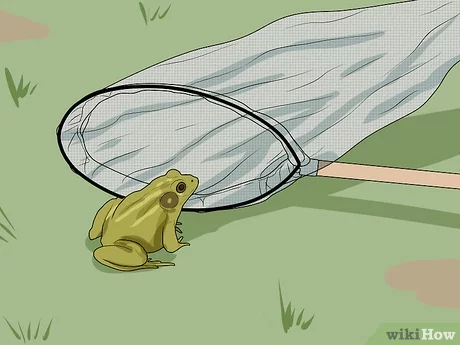
Typically, the best time to trap frogs is during the warmer months, especially in the early spring or summer when they are most active. Frogs tend to be more active at night, so setting up your trap in the evening or early morning can increase your chances of success.
Additionally, certain species of frogs may have specific breeding seasons or migration patterns. Researching the behavior of the specific frog species you are targeting can help you determine the best time to trap them.
Safety Precautions when Trapping Frogs
1. Wear Protective Clothing
Before you begin trapping frogs, make sure to wear appropriate protective clothing. This includes long-sleeved shirts, long pants, closed-toe shoes, and gloves. These clothes will not only protect you from any potential bites or scratches but also reduce the risk of coming into contact with any hazardous substances or plants that may be present in the trapping area.
2. Use Non-Toxic Traps
3. Handle Frogs with Care
When handling trapped frogs, it is crucial to be gentle and careful. Avoid squeezing or putting excessive pressure on the frogs, as this can cause injury or stress. Instead, hold them softly but firmly, supporting their body weight to prevent any harm. Additionally, remember to wash your hands thoroughly after handling frogs to minimize the risk of any potential bacteria or parasites.
4. Avoid Trapping in Extreme Weather
To ensure the safety of both yourself and the frogs, it is advisable to avoid trapping during extreme weather conditions. Frogs are more active during damp and cooler weather, so trapping during those times will increase your chances of success. Additionally, trapping during extreme heat or cold can be dangerous, as it may negatively impact the health of the frogs.
5. Respect the Environment
While trapping frogs, it is essential to respect the environment in which they live. Avoid disturbing the frog’s natural habitat or causing any damage to the surrounding ecosystem. Be mindful of any plants or wildlife that may be present and take precautions to avoid harming them.
By following these safety precautions, you can ensure a successful and responsible frog trapping experience while prioritizing the safety and well-being of both yourself and the frogs. Remember, responsible trapping practices are essential for the conservation of frog populations and the preservation of their natural habitat.
Proper Handling of Trapped Frogs
1. Approach with Caution: When approaching a trapped frog, do so slowly and gently. Frogs are delicate creatures, and rough handling can cause injury or stress.
2. Use Protective Gloves: To avoid direct contact with the frog and to protect yourself, it is recommended to wear protective gloves. This will also prevent any potential harm from the frog’s skin secretions.
3. Hold Properly: To hold a trapped frog, gently grasp it around the waist, avoiding the legs. This will prevent any unnecessary pressure on the frog’s limbs.
4. Do Not Squeeze: It is crucial not to squeeze the frog tightly or apply excessive force. This can harm the frog’s internal organs and cause injury or death.
5. Keep the Frog Moist: Frogs require a moist environment to survive. If handling a trapped frog for an extended period, ensure that it remains moist by lightly misting it with water or keeping it in a damp container.
6. Do Not Drop or Throw: Mishandling a trapped frog can lead to serious injuries. Always handle the frog with care, avoiding any sudden movements or dropping it from a height.
7. Avoid Harsh Chemicals: When washing your hands after handling a trapped frog, avoid using harsh chemicals or soaps. These can be harmful to frogs and may disrupt their delicate skin balance.
Frog trapping can be a necessary task in certain situations, such as scientific research or invasive species control. By following these guidelines, you can ensure the safe and proper handling of trapped frogs, minimizing any potential harm or stress to these amphibious creatures.
Releasing Trapped Frogs
-
Choose an Appropriate Release Site
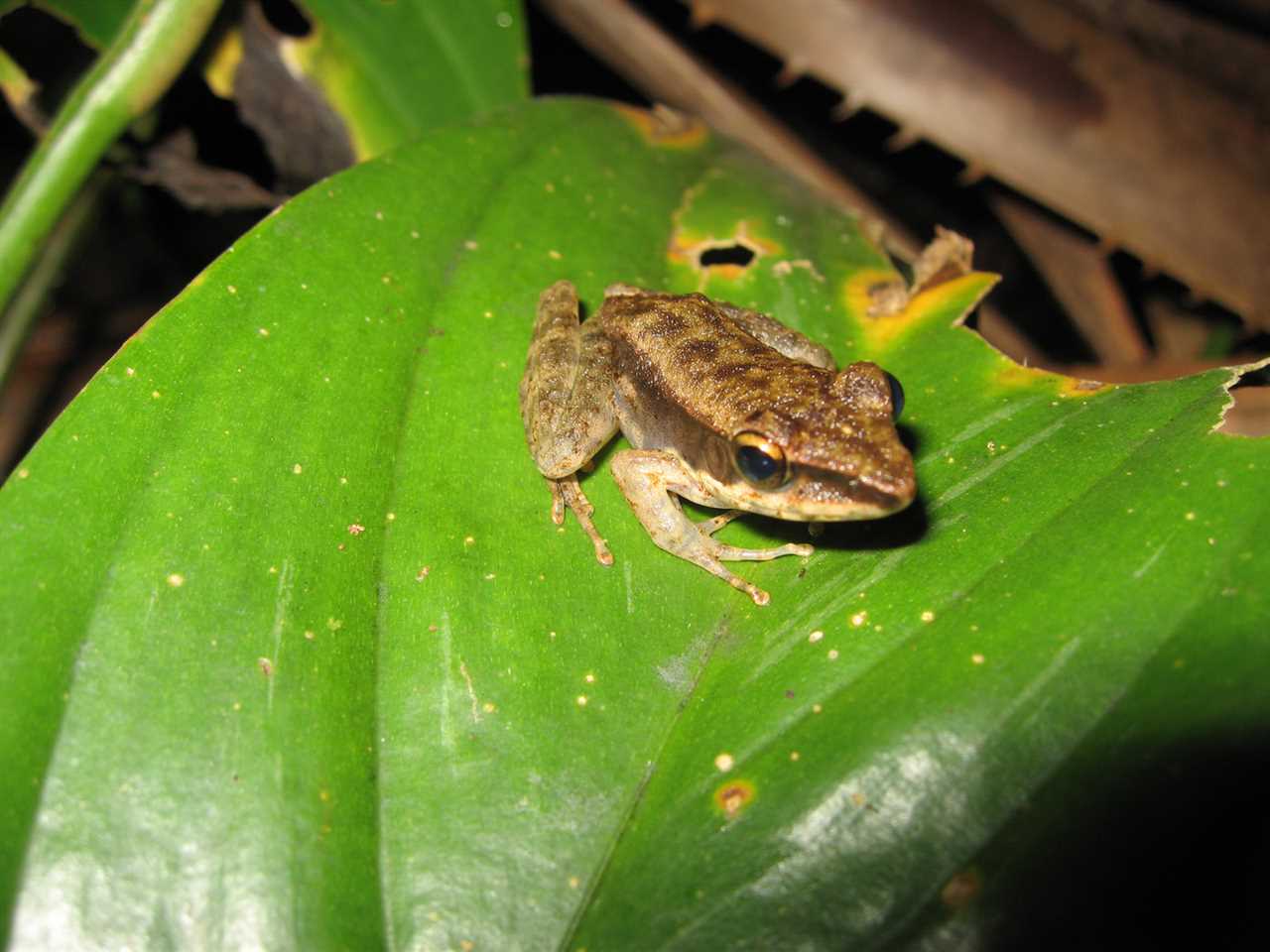
Select a release site that is similar to the frog’s natural habitat. This can be a nearby pond, wetland, or any other area with suitable conditions.
-
Determine the Time of Release
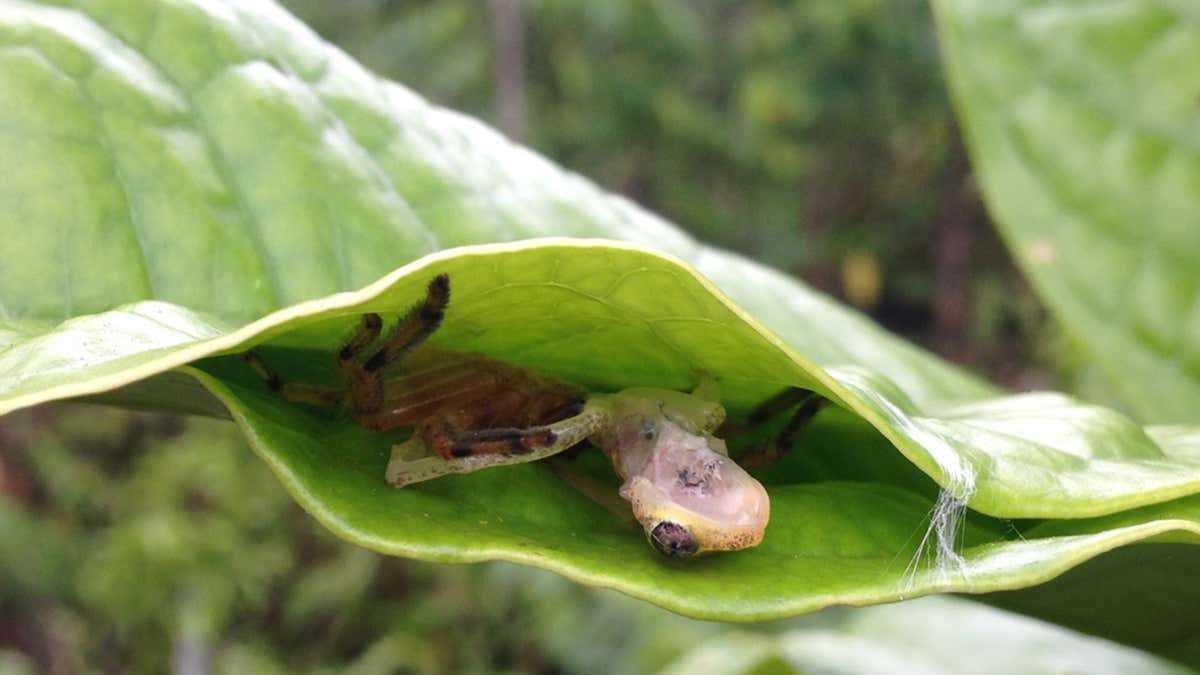
Releasing the frog during the evening or early morning is generally the best time. This allows the frog to acclimate to its surroundings and find shelter before the heat of the day.
-
Open the Trap Gently
When releasing the frog, carefully open the trap to avoid injuring or startling the frog. Slowly and gently open the door or remove the covering of the trap.
-
Allow the Frog to Exit Freely
Give the frog some time to exit the trap on its own. Avoid touching or interfering with the frog as it may cause unnecessary stress.
-
Observe the Frog’s Behavior
Watch the frog as it leaves the trap to ensure that it moves freely and exhibits normal behavior. If the frog seems injured or disoriented, provide assistance if needed.
-
Monitor the Frog’s Progress
Keep an eye on the released frog to ensure that it continues its normal activities in the new habitat. This will help you confirm that the frog has successfully adapted to its surroundings.
-
Dispose of the Trap Properly
Once you have released the frog, clean and sanitize the trap before using it again. This will prevent the spread of diseases among frogs and other animals.
-
Document the Release
Tips for Preventing Frogs from Returning
- Remove any sources of standing water: Frogs are attracted to water, so removing any stagnant water sources in your yard can discourage them from coming back. This includes emptying bird baths or garden containers regularly.
- Keep your yard tidy: Frogs are more likely to take up residence in areas with tall grass, dense vegetation, and piles of debris. By keeping your yard well-maintained and clutter-free, you can make it less inviting for frogs.
- Use frog repellents: There are commercially available frog repellents that can help keep them away. These products usually contain natural ingredients that produce a scent that frogs find unpleasant. Follow the instructions on the repellent label for best results.
- Install barriers: You can create physical barriers to prevent frogs from accessing certain areas of your yard. This can include installing fences or mesh around ponds or other water features.
- Remove food sources: Frogs are attracted to insects, so keeping your yard free of insects can help deter them. Consider using natural insect repellents or traps to control the insect population in your yard.
- Seal entry points: Inspect your property for any gaps or openings that may serve as entry points for frogs. Seal these openings with caulk or other suitable materials to prevent frogs from getting in.
- Implement noise deterrents: Some frogs are attracted to certain sounds. Playing music or installing sonic repellent devices that emit high-frequency sounds can help discourage frogs from returning.
By following these tips, you can significantly reduce the chances of frogs returning to your property. Remember to always consider the legal implications and regulations regarding trapping and relocating frogs in your area.
Legal Considerations
Before setting up a trap and catching frogs, it is crucial to research and familiarize yourself with the local laws and regulations regarding frog trapping. This information can typically be found on the website of your local wildlife or conservation department.
In some areas, a permit may be required to trap frogs, especially if they are protected or endangered species. Failure to comply with these regulations can result in heavy fines and legal consequences. It is always better to be safe than sorry, so make sure you are well-informed about the legal requirements before attempting to trap frogs.
| Key Points to Consider: |
|---|
| 1. Research and familiarize yourself with local laws and regulations regarding frog trapping. |
| 2. Check if a permit is required to trap frogs, especially if they are protected or endangered species. |
| 3. Failure to comply with legal requirements can result in fines and legal consequences. |
Hiring a Professional Frog Trapper
If you are unable or unwilling to trap frogs on your own, hiring a professional frog trapper can be a great option. These experts have the knowledge, experience, and equipment necessary to effectively trap frogs and remove them from your property.
When hiring a professional frog trapper, there are a few key considerations to keep in mind. First, ensure that the trapper is licensed and certified to handle wildlife in your area. This will ensure that they are knowledgeable about the local laws and regulations regarding frog trapping.
Before hiring a professional frog trapper, discuss the details of the trapping process. Ask about their methods and techniques, and make sure they align with your own preferences for humane and ethical trapping practices.
Finally, be sure to discuss pricing and any additional services that the trapper may offer. Some trappers may also provide frog removal and exclusion services, which can help prevent frogs from returning to your property in the future.
By hiring a professional frog trapper, you can ensure that the trapping process is handled safely, efficiently, and in accordance with local regulations. This can provide you with peace of mind and help you effectively address any frog-related concerns on your property.

I’m Lena Adams—a product of an unconventional upbringing in the African wilderness. My father, a daring explorer of African wildlife, sparked my fascination with reptiles, a passion that intertwined with the tragic loss of my mother during an expedition, leaving an indelible mark on my life. Driven to understand the creatures that captivated my parents, I embarked on my journey, sharing insights about reptiles, frogs, and lizards on my website. Through my explorations and conservation efforts, I honour my family’s legacy while seeking connections—to the creatures, nature, and the mother whose presence I yearn to understand.
